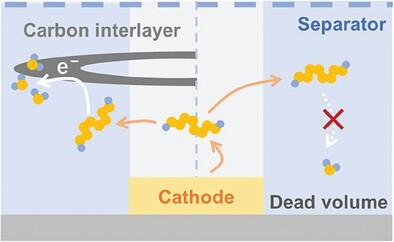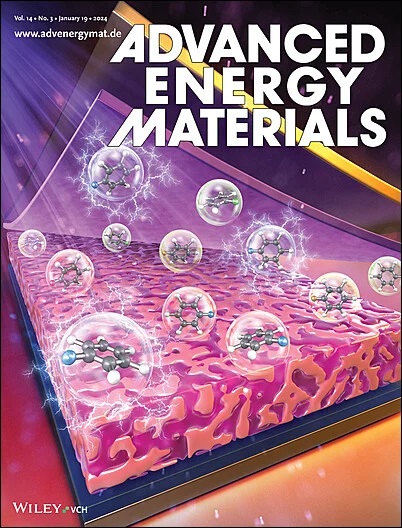Unveiling the Capacity Enhancement Mechanism of Carbon Interlayers in Lithium–Sulfur Batteries
IF 24.4
1区 材料科学
Q1 CHEMISTRY, PHYSICAL
引用次数: 0
Abstract
Lithium–sulfur (Li–S) batteries hold prominent advantages of high theoretical energy density of 2600 Wh kg−1 but suffer from insufficient sulfur conversions. Introducing carbon interlayers is an effective strategy especially in increasing the discharge capacity in coin cells. Nevertheless, the underlying capacity enhancement mechanism afforded by carbon interlayers remains unclear, hindering their further optimization and application in practical devices. Herein, different geometric configurations of carbon interlayers are designed to unveil the actual capacity enhancement mechanism. Through correlating the dead zone area of coin cells with the capacity enhancement afforded by carbon interlayers, re-utilization of the lithium polysulfides diffused into the coin cell dead zones is identified as the primary cause while carbon interlayers are less effective in nearly dead-zone-free pouch cells. Therefore, carbon interlayers are more suitable as a platform for convenient and rapid activity evaluation of electrocatalysts tailored for Li–S batteries. This work re-recognizes the working mechanism and practical applicability of carbon interlayers and guides rational employment of carbon interlayers in developing advanced Li–S batteries.

求助全文
约1分钟内获得全文
求助全文
来源期刊

Advanced Energy Materials
CHEMISTRY, PHYSICAL-ENERGY & FUELS
CiteScore
41.90
自引率
4.00%
发文量
889
审稿时长
1.4 months
期刊介绍:
Established in 2011, Advanced Energy Materials is an international, interdisciplinary, English-language journal that focuses on materials used in energy harvesting, conversion, and storage. It is regarded as a top-quality journal alongside Advanced Materials, Advanced Functional Materials, and Small.
With a 2022 Impact Factor of 27.8, Advanced Energy Materials is considered a prime source for the best energy-related research. The journal covers a wide range of topics in energy-related research, including organic and inorganic photovoltaics, batteries and supercapacitors, fuel cells, hydrogen generation and storage, thermoelectrics, water splitting and photocatalysis, solar fuels and thermosolar power, magnetocalorics, and piezoelectronics.
The readership of Advanced Energy Materials includes materials scientists, chemists, physicists, and engineers in both academia and industry. The journal is indexed in various databases and collections, such as Advanced Technologies & Aerospace Database, FIZ Karlsruhe, INSPEC (IET), Science Citation Index Expanded, Technology Collection, and Web of Science, among others.
 求助内容:
求助内容: 应助结果提醒方式:
应助结果提醒方式:


